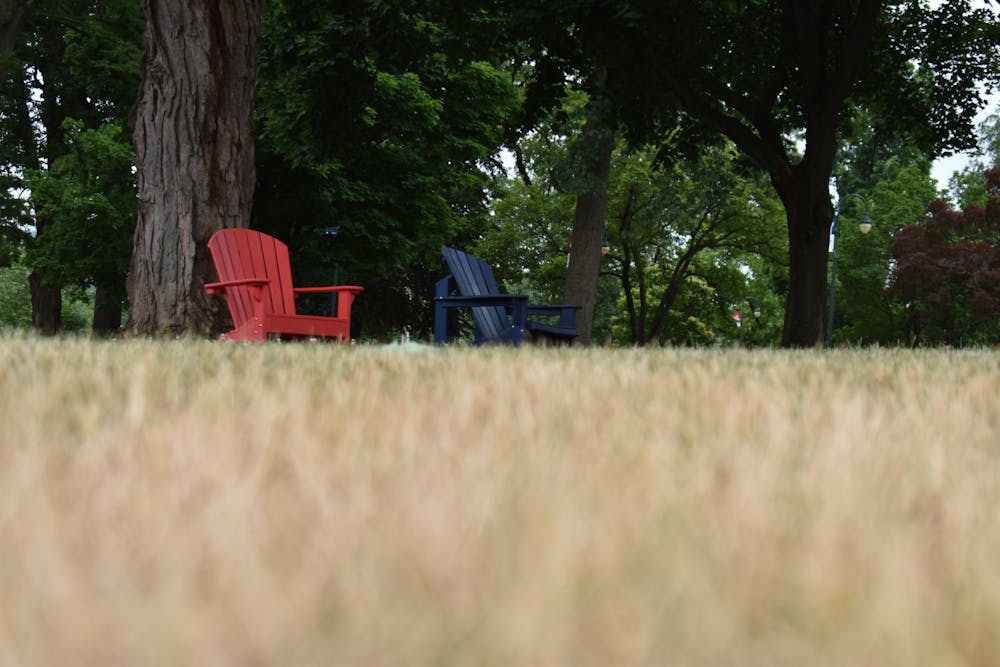When I think of the outdoors, I picture an image of lush greenery and clear blue skies, which ironically has not been a reality in Pennsylvania for a while because of our diminished air quality and lack of rain. When I step outside, the grass crunches under my feet, and the sky looks slightly orange from the Canadian wildfires.
Despite finally getting some rain last week, the Pennsylvania Department of Environmental Protection (DEP) issued a statewide drought watch on Thursday, June 15, following a meeting with the Commonwealth Drought Task Force. This precipitation, however, was “not enough to make up for the lack of rainfall this spring, following a winter that brought little snowfall in many areas,” Rich Negrin, acting DEP secretary, said in a statement.
Droughts are marked by unusually dry weather that persists long enough to cause serious problems like crop damages and/or water supply shortages, as defined by NASA.Negrin cited, “lowered stream flows, dropping groundwater levels, and persistent precipitation deficits” as consequences.
According to the National Weather Service Climate Prediction Center, drought tendency was developed throughout the month of June, with drought tendency persisting throughout September. Additionally, the National Oceanic and Atmospheric Administration has announced the emergence of El Niño, a natural climate phenomenon characteristic of warmer-than-average ocean temperatures in the Pacific equator. While its effects will not be as pronounced until late fall, El Niño typically brings dryer and warmer weather to the northern part of the United States, so we should prepare for unusually hot and dry conditions for the rest of the year.
In its release, the DEP asks Pennsylvania residents and businesses to cut back on their non-essential water use by 5 to 10 percent to preserve flow in the Commonwealth’s waterways. “Water conservation, always a good practice, is especially helpful now as it'll lessen potential future impacts on water supplies if rainfall continues to be scant this summer,” Negrin said in a statement.
With all these seemingly out-of-our-control phenomena, water conservation may seem impossible. Here are a few ways to add more water conscious habits to your daily schedule:
● Just like we were taught in elementary school, turn off the tap when you are brushing your teeth. Half of all at-home water use occurs in the bathroom. While shaving, fill the sink with a few inches of water, and rinse your razor with this water rather than using running water. For every minute in the shower, your shower head can use up to 10 gallons of water, so consider taking shorter showers. Make it a contest; see if you can beat your previous shower time (while still cleaning yourself effectively).
● Reuse your towels at home or while staying at a hotel to save on the number of towels to be washed.
● When doing laundry, wash only full loads while using cold water. This can also help you save money on your energy bills.
● While this may seem counterintuitive, use a dishwasher instead of washing dishes by hand. Before you load dishes into the dishwasher, you can scrape away excess food rather than rinsing with water. If you do not have a dishwasher, do not let the water run. Just fill one basin up with soapy water to wash the dishes and fill the other one with clean water to rinse the dishes off.
● Refill a water bottle or reuse the same glass for drinking water. This helps decrease the number of dishes to wash.
● You know when you drop an ice cube, you just kick it under the refrigerator? Instead of doing that, pick it up and put it into a house plant instead. You can even put leftover ice cubes from your drink in your house plants.
● Recycle water whenever you get a chance. Use water from boiling pasta to water your plants (once it has cooled down, of course). When you give your dog a bath, do it outside where grass can get some water. The possibilities are endless.
● Add more plant-based foods to your diet. Try cutting out beef, one of the most water-intensive foods.
Individuals can learn more about Pennsylvania’s drought status and other water conservation tips at www.dep.pa.gov.



The Slate welcomes thoughtful discussion on all of our stories, but please keep comments civil and on-topic. Read our full guidelines here.